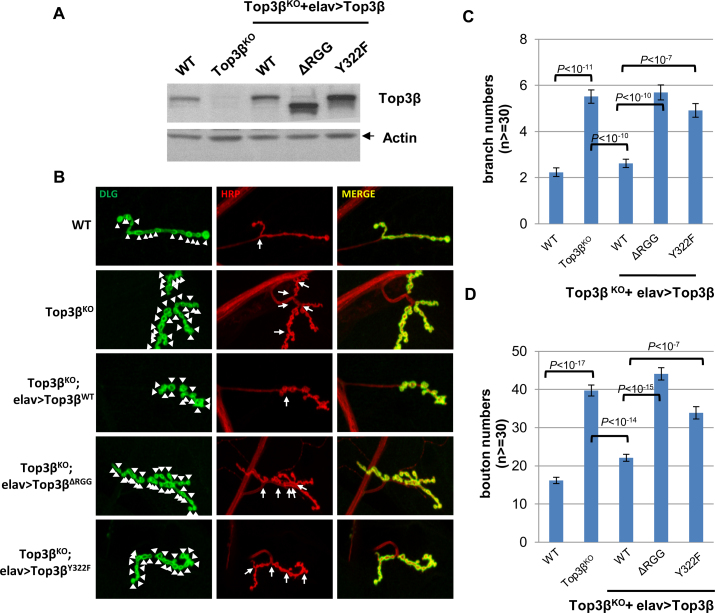Figure 2.
Top3β requires its distinctive RNA-binding domain and catalytic activity to promote synapse formation in Drosophila. (A) Immunoblotting shows the expression levels of Top3β wild type and various mutant proteins in brain extracts of Top3β-knockout and transgenic flies. (B) Representative immunofluorescence images of neuromuscular junctions at muscle 4 (NMJ4) of wandering third instar Drosophila larvae of different genotypes as indicated. The NMJ4 was co-labeled with a presynaptic marker (anti-HRP, red) and a postsynaptic marker (anti-DLG, green). The arrowheads mark synaptic boutons, and the arrows mark branches. Quantification of (C) synaptic branches and (D) boutons at NMJ4 from segments 3, 4 and 5 of both sides of wandering third instar larvae (n ≥ 30). The graphs show the means of the bouton or branch numbers, and error bars represent standard errors of mean from three independent experiments. The P-values shown above each bar were calculated using Student's t-test.

